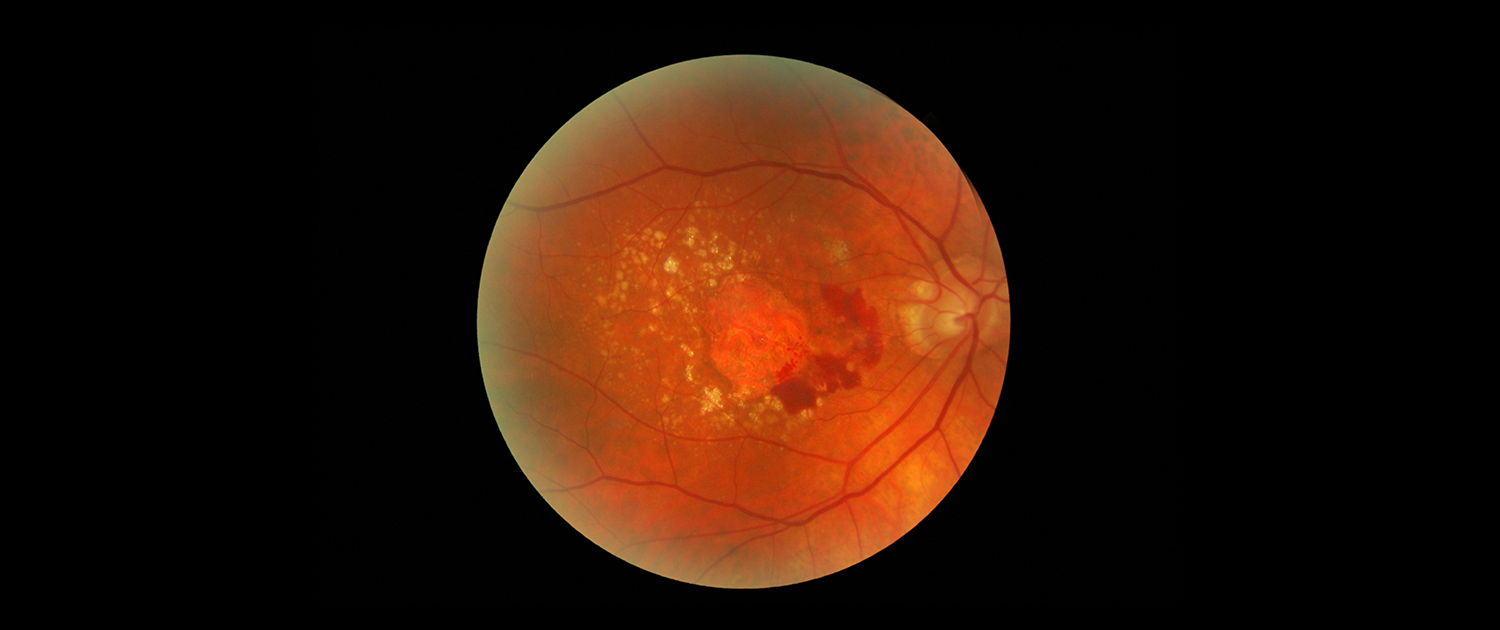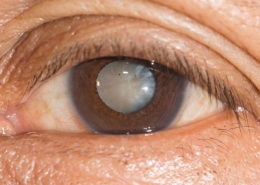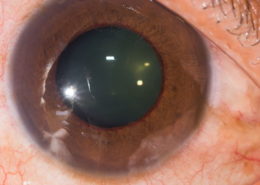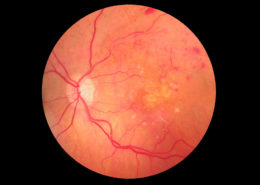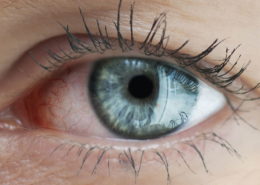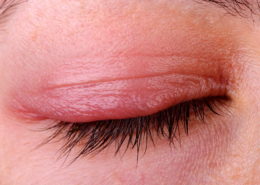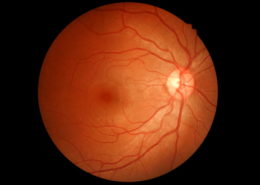Macular degeneration
What is the macula?
The thin inner layer of the eye is called retina. The central portion of the retina, which allows us to have a detailed view, to read and recognize the faces of people, is called macula. The rest of the retina allows lateral vision, but is not capable of distinguishing details. A person without a good macular function is able to move without going to strike against things and can take care of his daily necessities like bathing, cooking and eating. Patients do not become blind because of macular degeneration, yet they are unable to read a newspaper or recognize road signs as they are driving.
What is macular degeneration?
Macular degeneration is a deterioration of the macula, which is the most central area of the retina. The causes of macular degeneration are still subject to in-depth studies, but are generally associated with the aging of the aging process.
However, genetic or hereditary trends may also cause macular degeneration in children or young people or may predispose to the onset of the disease in patients over the age of 55.
Deterioration seems to be related to oxidants and other metabolic damage produced in the retina pigmented layer.
Over time this layer begins to degenerate and shape those that are called drusen. The more they form, the more the macular function decreases and the vision begins to fade. In some cases the pigmented layer undergoes an atrophy.
There are two forms of senile macular degeneration: dry and wet.
Dry form is a gradual macular degeneration in which retinal cells die and are not replaced. Its progression is variable, but usually progresses in many months or years. The development of drusen and / or the atrophy of the macula pigmented layer is called “dry macular degeneration”. About 10-15% of these shapes can develop a moist form. Therefore, it is important to periodic eye exams and contact the ophthalmologist in case you notice a sudden change of vision.
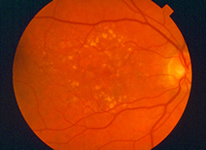
The wet form develops when abnormal blood vessels grow at the macular level. In fact, small ruptures may occur between the retina and the average vascular layer of the eye (choroid). These breaks allow abnormal blood vessels to grow and grow in the lower part of the retina. These vessels (neovascular subretinal membranes) cause bleeding and scars that often cause rapid and severe loss of macular function and central vision. It can develop suddenly. There are treatments for this form. It’s important to go to the ophthalmologist right away.
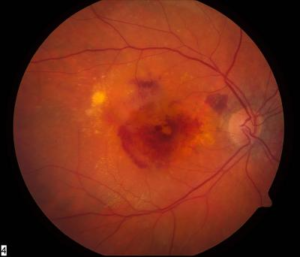
What are the symptoms?
Macular degeneration affects people in different ways. Symptoms may develop gradually in dry, senile, degenerative forms of degeneration, especially if it affects a single eye. However, as the state progresses, the ability to see clearly changes.
Dark or missing areas may appear in the view (such as a stain on the glasses), especially as the first thing in the morning, the front objects may change shape, size or color or appear to move or disappear, colors may be faded, clear lights may seem dazzling and annoying or can be difficult to adapt from dark to light, words can disappear when read, straight lines like door jambs and streetlights can be distorted or curved.
How do you diagnose?
You have to turn to an ophthalmologist who will perform the examination of the sight, put the drops to dilate the pupil and then observe the retina.
Further diagnostic examinations may be OCT (Optical Coherence Tomography) that perform macular scans and Fluorangiography consisting of retinal blood vessels photographs after injecting an endovascular contrast.
Prevention is to protect the retina from ultraviolet rays with sunglasses, non-smoking, in treating hypertension and diabetes. Also, keep a healthy body weight. Perform regular eye exams to control your eyes. Follow diet rich in omega 3 fatty acids (eg cod oil, almonds) and raw fruit and vegetables. Do not drink too much alcohol. Do regular exercise. A good diet is important to eye health because some foods protect the body from harmful substances called oxidants. In the eye, oxidants can help develop senile macular degeneration because they accelerate cellular degeneration. Antioxidants such as vitamin A, C and E and a group of substances called carotenoids reduce this harmful effect. Two important carotenoids for people with age-related macular degeneration are lutein and zeaxanthin. They are found in oranges, yellow fruits and vegetables such as corn and orange peppers.
Treatment
Therapy is based, in dry forms, on the intake of vitamin complexes with minerals and antioxidants that can slow the evolution of the disease. In wet forms, complicated by neovascular membranes, after fluorangiography, at present it is possible to have a more favorable evolution with regression of neovascularization by performing intravitreal injections of drugs that inhibit the growth of abnormal vessels. Often, longer injections are needed to permanently resolve the problem.
Conclusion
Macular degeneration is a serious disease, but with determination and patience its effects can be significantly reduced. Timely treatment and preventative measures can help slow down the disease and rehabilitation to improve vision can help people conduct an independent lifestyle.
Discover the other pathologies
This post is also available in: Italian

